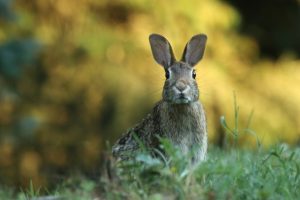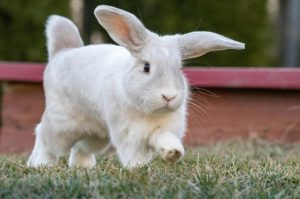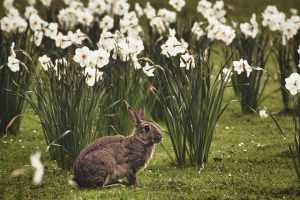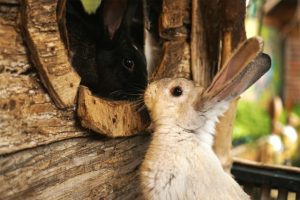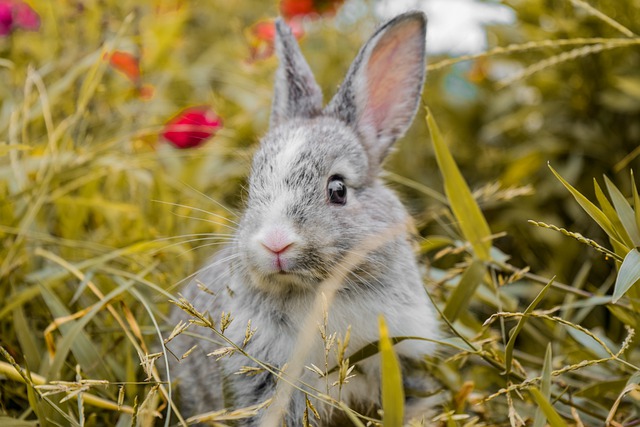
Rabbits are instinctually outdoor animals. Over time, more and more rabbit owners are creating indoor habitats for their rabbits.
Contents
Rabbits need a safe environment to live in.
It does not matter where, whether inside or outside, as long as their home is safe and protects them from predators.
Both the domesticated rabbit and the wild rabbit can live and survive outdoors in cold temperatures as long as they have a warm place to get to so they can sleep where it is warm.
Home
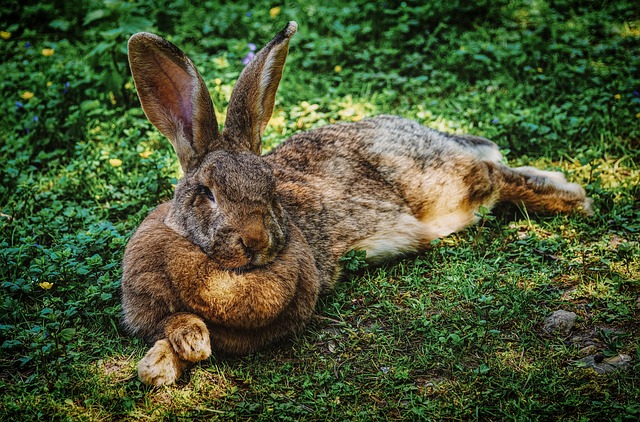
Where a rabbit lives is its home. It is where they eat, sleep, play and use the bathroom. Their environment needs to be large enough to accommodate all these activities for the rabbit. When building or buying a location for your rabbit to live in, some things you need to consider are that the space is large enough, is safe from predators, and has a way for the rabbit to watch for danger.
There should also be a space inside where the rabbit can sleep without being disturbed. The sleeping area may also double as the area the rabbit will choose to hide in, if he or she senses danger.
This environment must be able to protect the rabbit from all of nature’s elements. Even the summer weather can be too harsh for a rabbit, they need somewhere where there is no sun beating down on them, no rain or snow falling on them and soaking them or freezing the rabbit. The space also needs an area where the rabbit can crawl into and stay warm.
Your rabbit will also need space where it can chew as much as it wants, being able to interact with companions. A rabbit also feels the need to have an area that they can mark as their territory or scent the area so others know it is theirs.
Resting Area
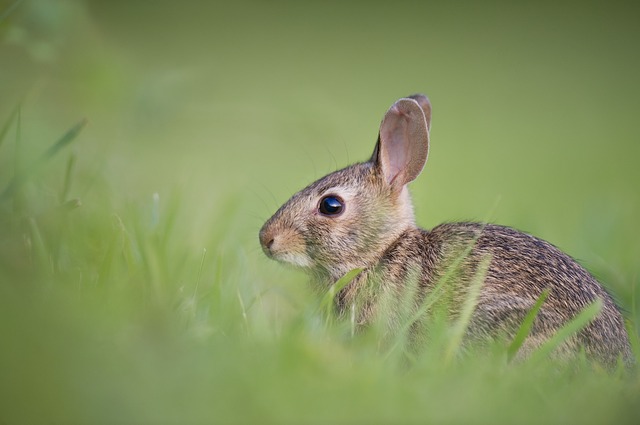
When a rabbit is resting, they need plenty of room to spread out. They really are not any different than any other animal, or human for that fact. This resting area will actually be two sections. You need one that is somewhat darker so that they can sleep peacefully.
The second area will be the eating room and relaxing room. A room to sort of stare out and watch the world happen.
Both areas need to be well ventilated and kept clean and dry. Any area that is damp or remains wet, can cause health issues. This relaxing and eating room should have access to the area where the rabbit can get to the exercise area. As a standard rule of thumb, the size of the hutch should be the length of three hops for a full grown rabbit. This would be the equivalent of 180 cm or almost 6 feet in length, and about 2 feet high to give them room to jump.
Of course, if you have two rabbits in one rabbit hutch, then you need almost twice the amount of room for sleeping and eating.
Outdoor Living
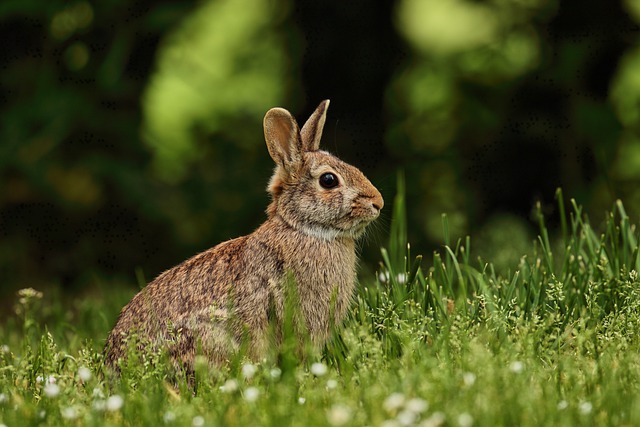
A rabbit can live outdoors all year with certain factors covered. Their resting and sleeping area needs to be somewhere where the elements cannot get to them. If the sleeping area and resting area are kept under an actual roof and surrounded by walls, what is going to matter is that there is ventilation at all times. Covering the rabbit hutch with a blue tarp is beneficial in the winter and colder months. The tarp will help to trap the heat inside their area more.
For many rabbit owners there is an idea that works really well for their rabbits. If they have a shed or small building that is not being used, it could be outfitted with a cat flap on the door that would lead out to an exercise area. The cat flap would prevent cold air from blowing into their living space. You must also ensure that the doors and windows have secure and tight fitting latches so that the rabbits cannot escape.
Another effective aspect to remember is that the cage or hutch is kept off the floor, which will help avoid the damp and the rain. Off the floor will also help keep the risk of any critters crawling into the hutch.
Adopting or Purchasing in the Fall
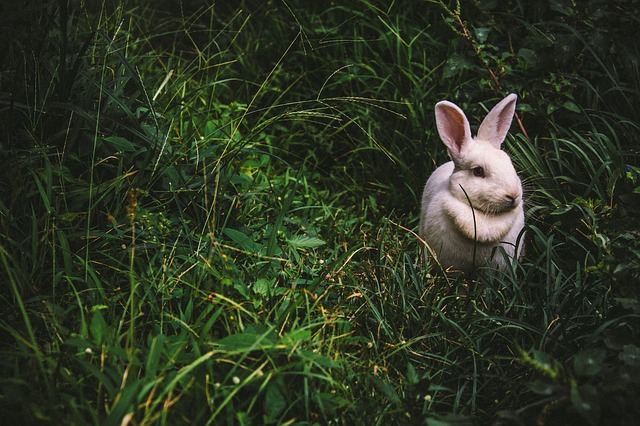
For those of you who decide to adopt or purchase a bunny in the fall, you need to remember that they are unable to live outdoors if you live in an area where it gets cold. The bunnies that are born in the fall have not grown enough to have grown a winter coat yet, they likely will not survive if set up to live outdoors right away. They need to have heat that first year as they cannot keep themselves warm enough to survive the cold weather temperatures.
Another important point to remember for outdoor rabbits is to keep an eye on their water bowls or bottles and their food. With temps that fall below freezing, it is obvious that the rabbits' food and water will freeze. They need to have a steady supply of water for hydration and food to remain healthy.
If you are going to keep your rabbit indoors for at least the first year, you should set restrictions as to where the rabbit is allowed to roam in the house. Most often, restricting the rabbit to one room is more than sufficient. A rabbit's living area should not be anywhere where there are electrical wires. This would include cords and extension plug cords. A utility room would not be a wise idea either as there are too many mechanics within the room.
Just as a rabbit cannot live outdoors with no protection from the weather, they cannot live indoors where they are too close to a heat source. Becoming overheated could be just as bad for the rabbit as being too cold.
All plants should be removed from the room that the rabbit will be living in. There are many poisonous(to rabbits) household plants. There are many which are not poisonous, but the rabbit should not be eating those unless it is on their approved list of foods.
Bedding

The bedding for your rabbit should be something comfortable, something that can be chewed on and yet that will keep the rabbit warm. Hay and straw are ideal. The bedding needs to remain dry at all times. A build-up of moisture can cause infections and health issues. Wood chips are not a suitable bedding for your rabbit. The wood will cause splinters and those could become lodged in the mouth or further into the digestive tract.
Outdoor Protection
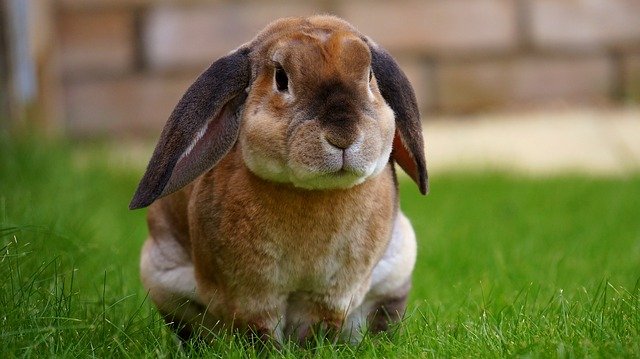
When a rabbit does live outdoors and also has access to an exercise run, the areas should both be weather proofed so that the rabbit can still have the exercise that they need and a warm place. Using tarps over the top of the enclosed run is helpful to protect the rabbit from the sun and heat in the summer and also the cold and snow in the winter.
Carpets on the ground will help protect them from the frozen ground. It does not have to be a lot of carpet, just small sections a short distance apart. Old blankets can be helpful for a rabbit to crawl under and stay warm in cold temperatures.
Other ideas that you should consider if you choose to keep your rabbit outdoors, there are insulated hutches that can be purchased for your rabbit. The walls are insulated to keep the bunnies warm no matter the weather. The ventilation system on the insulated rabbit hutches are the draft free types. Fresh air will be able to circulate so that your rabbit is not breathing in carbon from its own breath or sour or rotten smells.
Summary and Tips
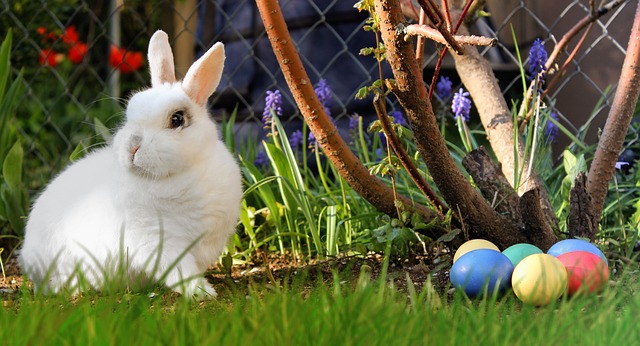
As you can see, rabbits would be fine living indoors or out. As long as they have what they need to be warm, safe and feel protected. They need dry bedding, food and water and a comfortable spot to sleep. There should be no electrical wires around for the rabbit to be tempted to nibble on, plants should be removed from indoor spaces.
What is highly important, and should be taken as a warning, is that when you make a decision about where your rabbit will live, you have to stick with it. You may personally know some friends or acquaintances that have sinus issues throughout the year. In the summer it would be mainly going from Air Conditioning to the outdoor heat, In the winter months vice versa is the case. The person would go from the warm indoor temperatures to the frigid outdoor temps.
When this is done off and on throughout the day, the sinuses will react and become clogged and cause a severe sinus infection. The same is possible for your little rabbit. Also, as winter comes, the rabbit will grow what is called a winter coat. In the warmer weather the winter coat begins to fall out. This would happen to the rabbit as it lives outdoors at first and then is moved indoors.
The coat will thin and begin to fall out. When you take the rabbit outside to live in the hutch again, they do not have enough fur on their bodies to keep their bodies warm. They may not survive through the winter when this happens


